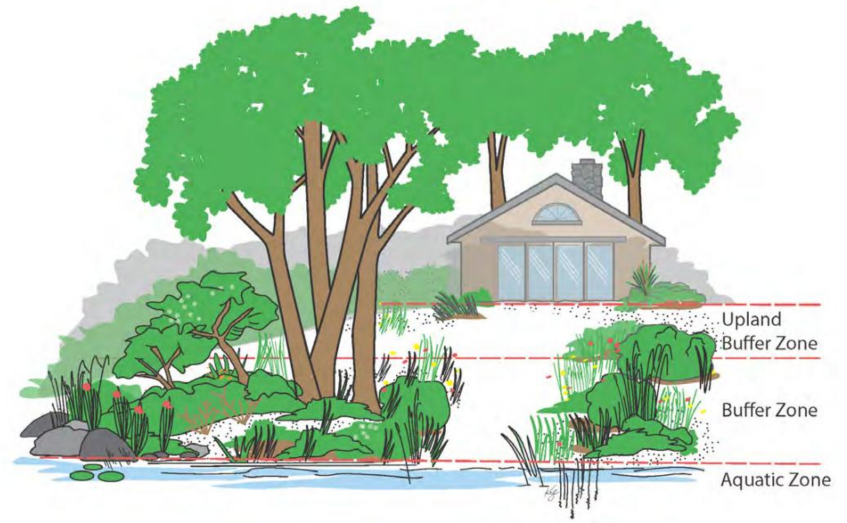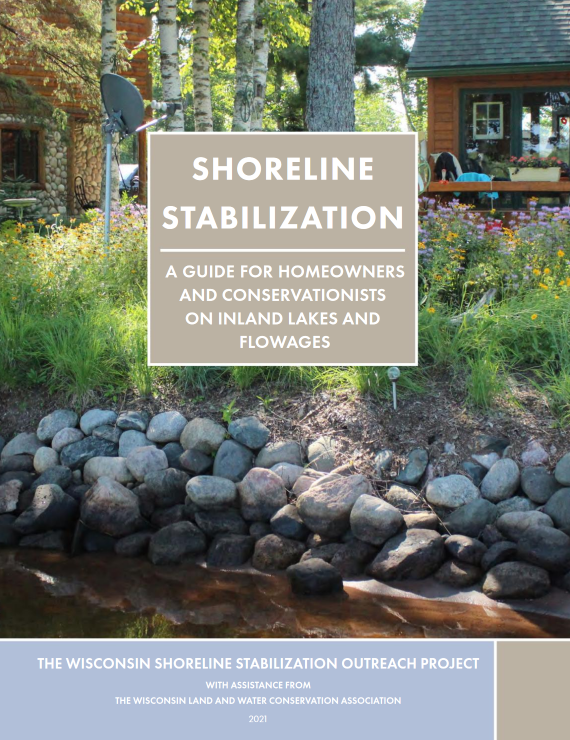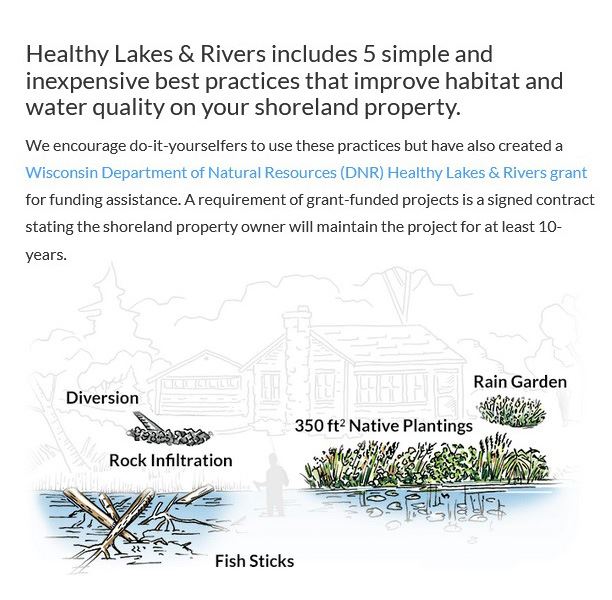Shoreline Stewardship
The quality of the Spider Chain of Lakes is a reflection of how we, as property owners, take care of our land. Healthy, diverse shorelands provide some of the most effective protection for our lake. Our SCLA Education Committee is undertaking a multi-year project to educate our membership on the steps we can take to maintain or restore our properties to support a healthy lake. This focus supports a key objective in the recently approved Comprehensive Lake Management Plan. We can each play a positive role in maintaining and improving our property’s watershed (the land area that drains to our lakes) to maintain the Spider Chain of Lakes’ water quality. In 2023, we will focus our efforts on three zones of our waterfront properties. Management activities in each of these zones affect lake health and we will be learning more about best practices for each zone.
Graphic reprinted from Shoreline Stabilization Project Outreach Project. Credit: Karen Engelbretson, KJE Design, LLC SCLA will provide both digital and in-person learning opportunities including the following:
We are excited to take this learning journey with you! Learn more about Shoreline Stewardship on the Wisconsin Healthy Lakes website. picnic island project (July-oct 2024)STAY TUNED, WE WILL NEED VOLUNTEER HELP LATER IN JULY. CHECK BACK TO THE WEBSITE FOR UPDATES AND DATES OF VOLUNTEER WORK! SCLA volunteers are excited to restore Picnic Island (Big Spider) after storm damage over the past decade. We will implement 3 of the 5 best practices recommended by Wisconsin Healthy Lakes. Using the island as a live laboratory, you will learn more about shoreland best practices and summer 2024 plans to contain erosion on our beloved Picnic Island. Learn more about the WI Healthy Lakes best practices and plans to restore Picnic Island: Click here for a PDF copy of the June 18 presentation by WDNR Biologist Scott Van Egren and project contractor Nile Merton. For more information go to the Picnic Island Project page.Best Practices to Improve Habitat and Water Quality
Wisconsin Healthy Lakes & Rivers suggests five best practices to improve habitat and water quality on shoreland properties. To learn more about each best practice, click on this link.
MY SHORELINE WEEKMy Shoreline Week has been an SCLA event since 2013. We ask all SCLA members to pay attention to how your property may either promote a healthy lake or detract from it. A recent theme was “Trust the Buffer.” We asked all members to assess their waterfront to see if they met the 35 foot buffer setback requirement from the ordinary high-water mark. We distributed flyers at various locations to highlight this event. The best line of defense to preserve the quality of lakes is to maintain a 35 foot natural vegetative buffer to the shoreline. And, in Wisconsin, it's the law: "To protect water quality, fish and wildlife habitat and natural scenic beauty and to promote preservation and restoration of native vegetation, the county ordinance shall designate land that extends from the ordinary high water mark to a minimum of 35 feet inland as a vegetative buffer zone and prohibit removal of vegetation in the vegetative buffer zone..." -- Wisc. Admin Code NR 115.05 | Resources
Where to Buy Native Plants: Scroll down for Nursery List below Click on image to access this resource: Picnic Island Restoration Slide Deck:From SCLA member Zoom Mtg 6/18/24 Native Plant Handouts 6/8/23 Wine and Wisdom program:Native Plant NurseriesDRAGONFLY GARDENS Amery, WI Natives Dept: 715-554-7218 HANSON'S GARDEN VILLAGE Rhinelander, WI 715-365-2929 NORTHERN NATIVE PLANTSCAPES Cable, WI 715-794-2548 Sarah Boles, owner YENNY'S WILDFLOWERS, LLC Phelps, WI 715-891-4324 Patrick Goggin, owner
Wildflower Woods, Washburn, WI |



